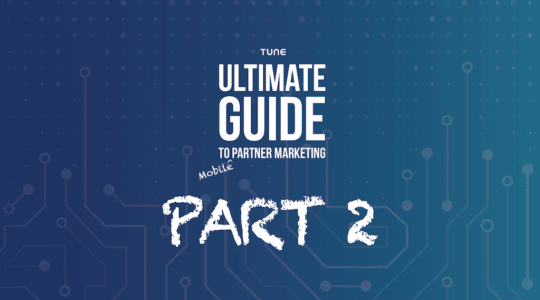Affiliate Planning, Research, Targeting, and Traffic
It’s here, Part 6 of the Affiliate Marketing for Your Business series, where we’re covering everything from basic to advanced concepts for affiliate programs. Since you’ve covered the basics of who affiliates are, creating offers, and generating tracking links, it’s time to learn what affiliates do with these assets. We’re going to look at the affiliate business: how affiliates plan their websites, the competitive research they perform, how they target their audience, the niche content they create, and lastly, how they drive traffic to their websites.
How do affiliates plan their websites?
Affiliates spend countless hours researching and looking into niche markets they can target that need information, resources and solutions. Affiliates know how to develop and execute strategies to attract thousands of visitors. They construct a user experience that encourages visitors to read their content, provide contact information, and of course make purchases.
Affiliates develop articles, resources, and blogs to provide niche material to solve problems users may face. This type of content increases traffic coming to their site, which in turn, translates into more sales through solution-based content-rich information. Affiliates weave links throughout their content to enhance the quality and keep readers coming back to their business. Affiliates often post their content in mediums such as; forums, discussion boards, and online communities.
Targeting the right audience for affiliate success
After all the research, affiliates need to know their audience. Identifying their target audience and determining who and how to market their campaigns will render profitable results when acquiring traffic and promoting offers for their affiliate business. Understanding their audience’s demographics, socio-economic status, geo-location, problems, challenges, difficulties, and other factors will allow for solution-based content to provide answers to their needs, all while promoting an affiliate program’s offers.
Because affiliates know the ins and outs of their audience, they investigate products and services to determine the best resource to promote to their users. In doing so, they offer a remedy to a problem, they promote a product they believe in, and generate commissions based on sales they make to their users. Now that’s a win-win!
There’s no research like competitive research
When marketing to a targeted niche, affiliates find it helpful to assess the competition to discover popular offers and products. They review advertising campaigns, investigating which buzz words render well with that segment of the market. Additionally, they look into their competitor’s user experience, site design and functionality. This analysis can provide inspirational ideas for promoting products and insights into what makes an effective affiliate business strategy. By researching similar websites, affiliates are able to garner new ideas and techniques of how to author more specialized content.
Planning an affiliate website
Ever been to a website that has no navigation, you can’t search or find information and in some cases, you get inundated with pop-ups and screen-take overs. As you can imagine, designing, developing, and publishing a website can be a complicated and technical task. It takes a lot of preparation and planning, but when done correctly, it can be extremely lucrative and successful.
Affiliates plan their websites to achieve two objectives: attract visitors and monetize their efforts. Because of these two very simple goals, affiliates focus on a few key aspects, including design, content, visitors, and list and/or link building.
- Design/User Experience: the ideal design is original, creative, eye-catching, all while remaining user friendly and functional. Visitors need to be able to search for information and navigate from one page to another while understanding the transition they’re making. Lastly, a well-orchestrated user experience will attract and retain visitors, promote greater time-on-site and increase the probability of making a sale.
- Content: creating compelling content is not easy, knowing your target audience makes it easier and more targeted. Affiliates follow several fundamentals when writing content for their users. The first is researching and publishing information that attracts visitors and encourages them to return. The second is knowing content, while entertaining, needs to be used as a tool to stimulate users to perform a desired action. The right content addresses an issue or problem, and then provides a solution.
- Target Audience: one of the most important components in affiliate marketing is the audience. Since the end focus is always adding value to the visitor, affiliates go to great lengths to determine what merit they need to provide their users. Becoming familiar with particular issues or concerns is a tremendous way of identifying and relating to their audience. Affiliates share with their readers, allowing them to speak to their needs, nuisances or questions and provide solutions.
- List Building and Link Building: additional tactics affiliates take to promote your offers. Collecting contact information or email addresses to re-market to through list building is a great way to promote a solution (your offer) through targeted messaging. Link building is the practice of finding niche-related content-rich websites that rank well in search engines and exchanging links. This is done to increase rank on search engine’s results pages. The placing of a link from one site to another is seen by search engines as an endorsement that the website is credible, popular and beneficial to the end user. For more information, read this comprehensive resource on link building.
So how do affiliates drive traffic?
There are countless ways affiliates drive traffic to their businesses. We’re going to focus on the most common methods: organic search, paid search, social media, and email marketing.
- Organic Search: search engine optimization (SEO), the practice of increasing website visibility through targeting keywords and optimizing content for increased page ranking and relevancy. Additional strategies include; link building, HTML coding practices, website development and design, frequent content publishing and countless other strategies that evolve daily. For additional information, please refer to this SEO resource. Organic search users are free visitors, often times these users are seeking out related keyword phrases, prequalifying them to be extremely targeted and high quality visitors. For excellent information, please see this article on building a targeted keyword list.
- Paid Search: often done through search engine marketing (SEM) on the Google, Yahoo and Bing advertising networks; affiliates target keyword phrases searched by users and bid on a price they’re will to pay for each click. It’s an excellent way to generate immediate traffic, while targeting user intent; prequalifying visitors who may be closer to the buying phase of their research rather than investigating. Paid search users are not free and expensive to acquire. Constantly improving different facets of your paid search efforts will continuously render lower cost per acquisitions and increase profitability.
- Social Media: is still being tested, optimized, and characterized within the industry. The basic idea behind it is sharing user-generated content (UGC) to targeted “opt-in” groups following your social media channels. Social Media Optimization (SMO) adds value to an affiliate program through the recruitment of new users and the retention of existing customers. While tracking is not as intuitive as other mediums, options do exist. Here is a fairly comprehensive social media resource.
- Email Marketing: considered by many to be the single most effective direct messaging tool in online marketing. This marketing channel requires a user to “opt-in” to receive your email messages. Many email platforms enable dynamic field variables, allowing for personalized, targeted, and time-sensitive messaging. Affiliates send promotional emails highlighting specific products, services or offers. One of the benefits of email marketing is the ability to market to users after a specific action has taken place. For example, if a user adds an item to their shopping cart and abandons prior to purchase, you can send messages to offer assistance, promote similar products, remind them they still haven’t purchased, etc. The ability to easily track these efforts make optimizing and increasing the return on investment (ROI) very valuable to any affiliate program.
Now that I know what affiliates do with their websites, what’s next?
You’re really becoming an expert in affiliate marketing! By now, your program may be starting to take shape and may even be generating some incremental sales. If not, no worries. Next week we’re going to review affiliate networks and learn how you can partner with the right one. Feel free to leave comments below.
- Part 1: Basic concepts for your affiliate marketing program.
- Part 2: A brief introduction to affiliate offers.
- Part 3: Understanding affiliate marketers.
- Part 4: Setting up your affiliate offers.
- Part 5: Variables and parameters for your tracking URLs.
- Part 6: Affiliate planning, research, targeting and traffic.
- Part 7: What can my program offer to attract affiliates?
- Part 8: Ways to recruit affiliates.
Author
Becky is the Senior Content Marketing Manager at TUNE. Before TUNE, she led a variety of marketing and communications projects at San Francisco startups. Becky received her bachelor's degree in English from Wake Forest University. After living nearly a decade in San Francisco and Seattle, she has returned to her home of Charleston, SC, where you can find her enjoying the sun and salt water with her family.




Leave a Reply
You must be logged in to post a comment.